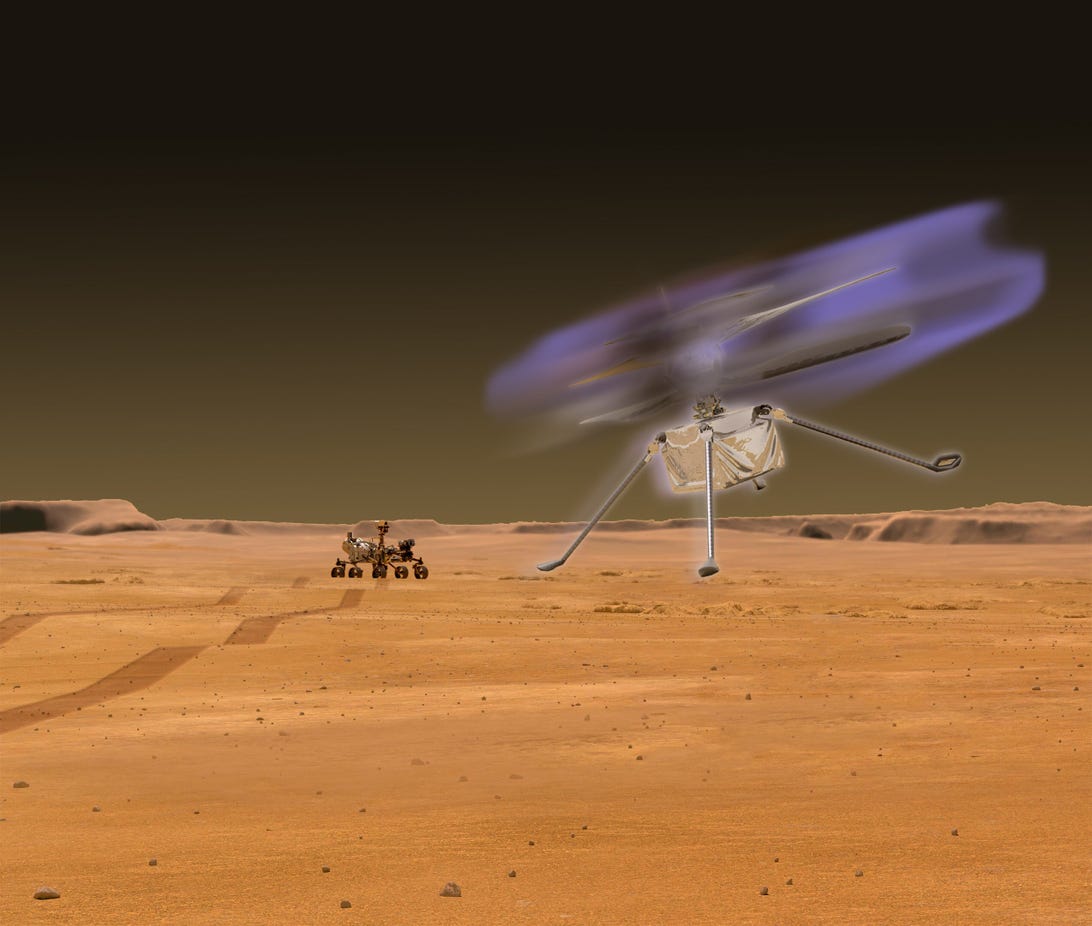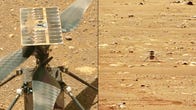

Artist’s idea of a glow surrounding a drone at Mars all the way through flight.
NASA/Jay Friedlander
Drones and helicopters flying at the crimson planet would possibly glow as they fly through, growing tiny electrical currents within the Martian setting.
That is in keeping with NASA scientists who say the physics concerned don’t seem to be in truth alien; it is very similar to the phenomenon on Earth referred to as St. Elmo’s Hearth that is once in a while noticed round ships and planes in electric storms.
“The faint glow can be maximum visual all the way through night hours when the background sky is darker,” William Farrell, of NASA’s Goddard House Flight Heart, mentioned in a remark.
Farrell is the lead creator of a learn about revealed final 12 months within the Planetary Science Magazine. It describes his workforce’s use of lab measurements and laptop fashions to research how the rotor blades of a drone or helicopter would possibly increase {an electrical} rate in a dusty setting like that on Mars.
“The electrical currents generated through the fast-rotating blades on drones are too small to be a danger to the craft or the Martian setting, however they provide a chance to perform a little further science to reinforce our working out of an accumulation of electrical rate known as ‘triboelectric charging,'” Farrell wrote.
The atmosphere of Mars is remarkably thin and the resulting low pressure makes for more ideal conditions for this accumulation to occur. The team hypothesizes that the currents generated by flying a drone on Mars would be small but possibly energetic enough to create a blue-purple glow around such a small craft in flight.
NASA already has a small helicopter named Ingenuity that’s been making experimental flights from the surface of Mars for the past year, but it’s not able to fly at the right dusky hour.
“Future drones could be cleared for evening flight and look for this glow,” Farrell writes. “In fact, one could even place small electrometers up near the blade and at the legs to monitor the effects of any charging. This kind of electrical monitor could be of both scientific value and provide critical input on drone health during the flight.”
Humanity’s interminable wait for Martian glow-in-the-dark drones may finally be over soon.

